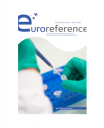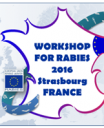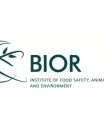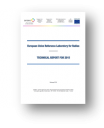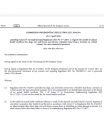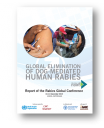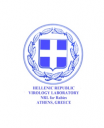
Greek National Reference Laboratory for Rabies - Virology laboratory, Athens
♦ 01 April 2016 ♦
Laboratory
The Virology Laboratory in Athens Veterinary Center has been involved in rabies diagnosis since 1951 and is the National Reference Laboratory for animal rabies in Greece from the beginning of 1979. The Virology Laboratory has been recently placed in the Department of Molecular Diagnostics, FMD, Virological, Ricketsial and Exotic Diseases, head of which is Dr Eleni Chondrokouki.
It is responsible for rabies diagnosis in animals collected in the context of rabies passive and active surveillance programmes. The lab is also recognized by the European Commission as approved laboratory, since 2000, for the performance of rabies serological test (FAVN test) in the frame of regulation for non-commercial animal movements.
The rabies laboratory team is composed of Dr Konstantia Tasioudi (DVM, MSc, PhD), Dr Peristera Iliadou (DVM, MSc), Dr Aikaterini Kirtzalidou (DVM, MSc, Phd) who joined the team last year and the technician Dimitrios Bakakos, who are mainly involved in rabies diagnosis.
The phylogenetic analysis of the Greek rabies strains has been performed by Dr Eirini Agianniotaki (DVM, MPH, MSc Mol Med). Currently, there are also two veterinarians, Gerasimos Markantonatos (DVM, MSc), Dimos Papatheodorou (DVM) and one technician (Mrs Vassiliki Pani), who are recruited for the needs of the National Greek rabies programs and the related costs are co-financed both by the Greek State budget and the European Commission.
Methods
The following techniques are performed in our lab:
• Fluorescence antibody test (FAT)
• Molecular techniques (Real-time and Conventional PCR)
• Fluorescence Virus Neutralisation test (FAVN)
• ELISA for detection of rabies abs in active surveillance samples
• Tetracycline detection
• Age determination of foxes
History of rabies in Greece
Greece was a rabies free country since 1987, when the last case was reported in a dog. Up to 1987 rabies in Greece was mainly urban. Between 1971 and 1987, 248 domestic animal rabies cases were recorded, of which only 6 occurred between 1981 and 1987 (4). The wide compulsory vaccination of dogs as well as the control of stray dog population, were the two main measures that led to the elimination of rabies in Greece.
Greece maintained the rabies free status for almost twenty five years, when the first rabies case was laboratory confirmed on 19 October, 2012 in a red fox in Palaiokastro village, found around 60 kilometers from the Albanian border (Prefecture of Kozani, Western Macedonia).
Current Situation of rabies in Greece
In the recent outbreak, rabies cycle appears to be sylvatic, with the red fox as the main reservoir of the virus. From October 2012 until now, 48 rabies cases have been laboratory confirmed (40 red foxes, 5 dogs, 2 bovines and 1 cat). The last positive case was diagnosed in a red fox in the regional unit of Pella on May 2014. The number of rabies suspected animals investigated in the frame of passive surveillance in Greece, the period between January 2012 and December 2015, were 1761. In detail, 237 animals were tested in 2012, 587 in 2013, 410 in 2014 and 257 in 2015.
The first ever oral vaccination campaign carried out in Greece was initiated on 11 October 2013 and until now there have been three autumn oral vaccination campaigns. The third one is in progress, it will be completed by the end of March 2016 and the next ORV campaign will take place during spring 2016. The implementation of oral vaccination campaigns of wildlife against rabies will be continued in the following years and along with a strengthened rabies passive surveillance programme, Greece could regain the rabies free status in the near future.
Our recent rabies publications
1. Korou LM et al. Evaluation of the first oral rabies vaccination campaign of the red foxes in Greece. Vaccine. 2016 Jan 2; 34(1):41-8.
2. Tasioudi KE et al. Bovine rabies in Greece in 2013.Vet Rec. 2015 Dec 12;177(23):598.
3. Tasioudi KE et al. Recurrence of animal rabies, Greece, 2012. Emerg Infect Dis. 2014 Feb;20(2):326-8.
4. Tsiodras S et al. Rabies in Greece; historical perspectives in view of the current re-emergence in wild and domestic animals. Travel Med Infect Dis. 2014 Nov-Dec;12 (6 Pt A):628-35.
5. Tsiodras S et al. Re-emergence of animal rabies in northern Greece and subsequent human exposure, October 2012 - March 2013. Euro Surveill. 2013 May 2;18(18):20474.
.pdf version


